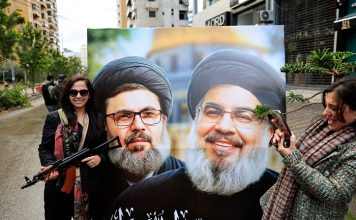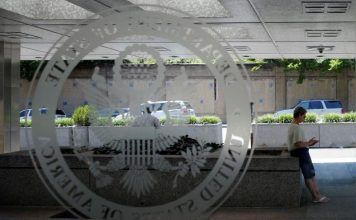By Parisa Hafezi
DUBAI, July 2 – A fire broke out at Iran‘s Natanz nuclear facility on Thursday but operations were unaffected, officials said, as a former official suggested the incident could have been an attempt to sabotage work breaching an international nuclear deal.
The Natanz Fuel Enrichment Plant (FEP), Iran‘s main uranium enrichment site, is one of several Iranian facilities monitored by the United Nations nuclear watchdog.
Iran‘s Atomic Energy Organisation (AEOI) initially reported that “an incident” had occurred at the facility in the central province of Isfahan at 2 a.m. (21:30 GMT).
“There is some damage to one of the sheds on the ground which was inactive and under construction. There was no radioactive material in it and there were no personnel,” the AEOI spokesman, Behrouz Kamalvandi, told state TV from the site.
“There has been no interruption in the work of the enrichment site which is underground and no damage to the site.”
It later published a photo showing a one-storey brick building with its roof and walls partly burned and damaged. A door hanging off its hinges suggested that there had been an explosion inside the building.
The governor of Natanz city, Ramazanali Ferdosi, said the incident caused a fire but he gave no further details about the cause, the Tasnim news agency reported. Experts from the AEOI are investigating the cause of the blaze, Kamalvandi said.
[aesop_image img=”https://kayhanlife.com/wp-content/uploads/2018/07/2006-03-09T120000Z_244764953_GM1DSCWMZIAA_RTRMADP_3_IRAN.jpg” panorama=”off” credit=”REUTERS/Raheb Homavandi” align=”center” lightbox=”on” captionsrc=”custom” caption=”FILE PHOTO: Iranian soldiers stand guard on an anti-aircraft machine gun inside the Natanz uranium enrichment facility, 322km (200 miles) south of Iran’s capital Tehran. ” captionposition=”left” revealfx=”off” overlay_revealfx=”off”]
SABOTAGE?
Some analysts identified the site as a centrifuge assembly building, which would make the incident a setback for Iran‘s disputed nuclear programme.
“The site of the fire at the Natanz Enrichment Plant identified in an AEOI photo is the same building the Institute identified as centrifuge assembly workshop in 2017,” the Washington-based non-profit, Institute for Science and International Security said on Twitter.
Some experts did not rule out the possibility of sabotage given the importance of the Natanz nuclear site.
“Considering that this so-called incident happened just a few days after the explosion near the Parchin military base, the possibility of sabotage cannot be ruled out,” a former Iranian nuclear official told Reuters.
“Also, the Natanz enrichment facility has been targeted in the past by a computer virus,” he said, referring to an attack in 2010 by the Stuxnet computer virus that damaged centrifuges and is widely believed to have been developed by the United States and Israel.
Last Friday an explosion occurred east of Tehran near the Parchin military and weapons development base that the authorities said was caused by a tank leak in a gas storage facility in a public area.
Western security services believe Tehran carried out tests relevant to nuclear bomb detonations more than a decade ago at Parchin. Iran has denied it carried out such tests.
Iran agreed to curb its nuclear program in exchange for the removal of most international sanctions in a deal reached between Tehran and six world powers in 2015.
But Tehran has gradually reduced its commitments to the accord since U.S. President Donald Trump’s administration withdrew from the agreement in 2018 and reimposed and intensified sanctions that have battered Iran‘s economy.
The deal only allows Iran to enrich uranium at Natanz facility with just over 5,000 first-generation IR-1 centrifuges, but Iran has installed new cascades of advanced centrifuges.
Israel has backed Trump’s “maximum pressure” policy on Tehran aimed at forcing it to agree a new deal that puts stricter limits on its nuclear work, curbs its ballistic missile program and ends its regional proxy wars.
Iran says it will not negotiate as long as sanctions remain in place.
The International Atomic Energy Agency, which is policing the nuclear deal and carries out inspections in Iran, said it was aware of reports about Natanz and in contact with relevant authorities in Iran to confirm it could continue its checks at the nuclear facility.
(Additional reporting by Francois Murphy in Vienna, Writing by Parisa Hafezi; Editing by Angus MacSwan and Philippa Fletcher)

![Employees work in the Natanz nuclear facility 300 kilometers south of [Tehran] November 20, 2004. [..](https://kayhanlife.com/wp-content/uploads/2019/05/2004-11-21T120000Z_788634034_PBEAHUOELBZ_RTRMADP_3_IRAN-696x485.jpg)






